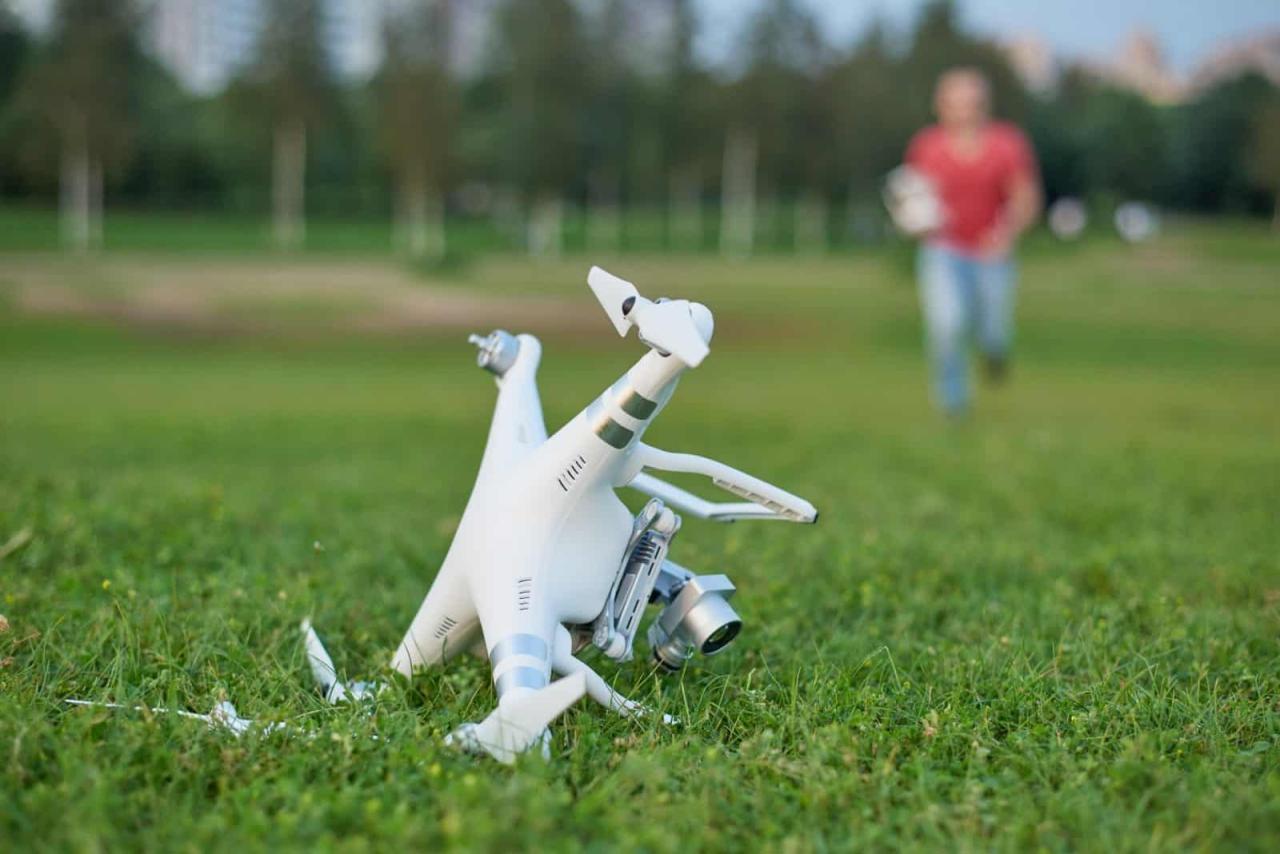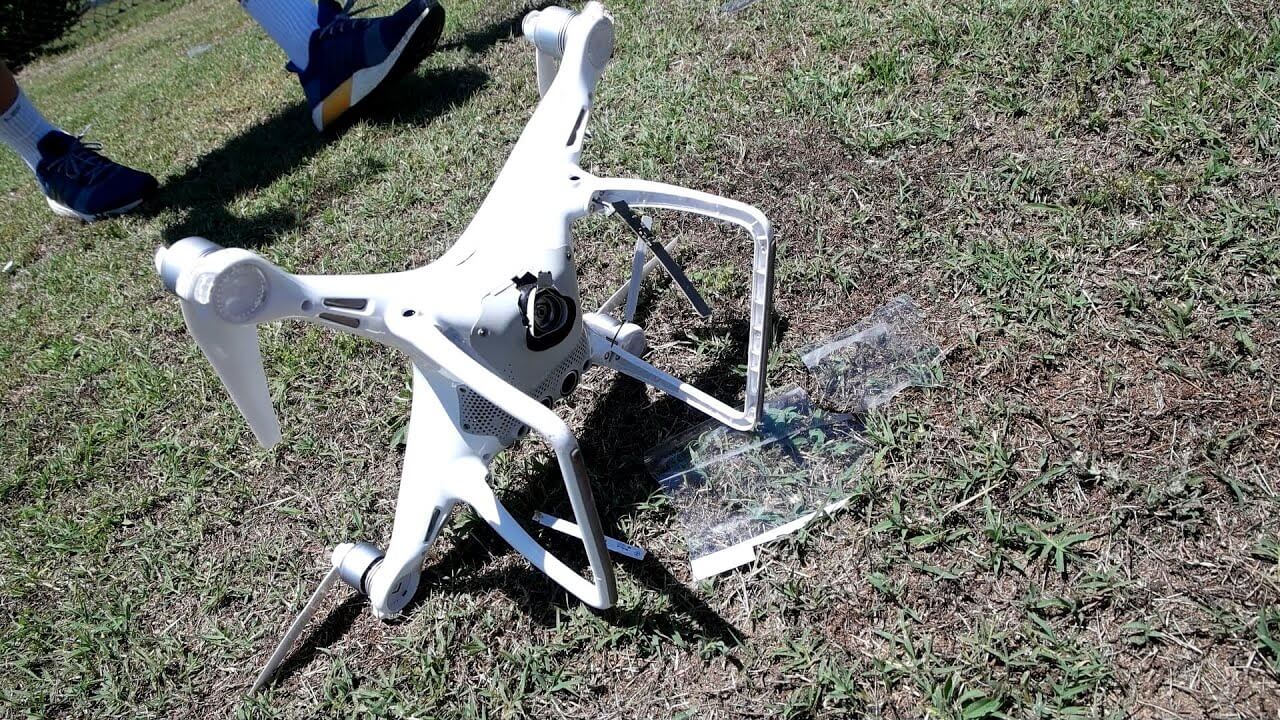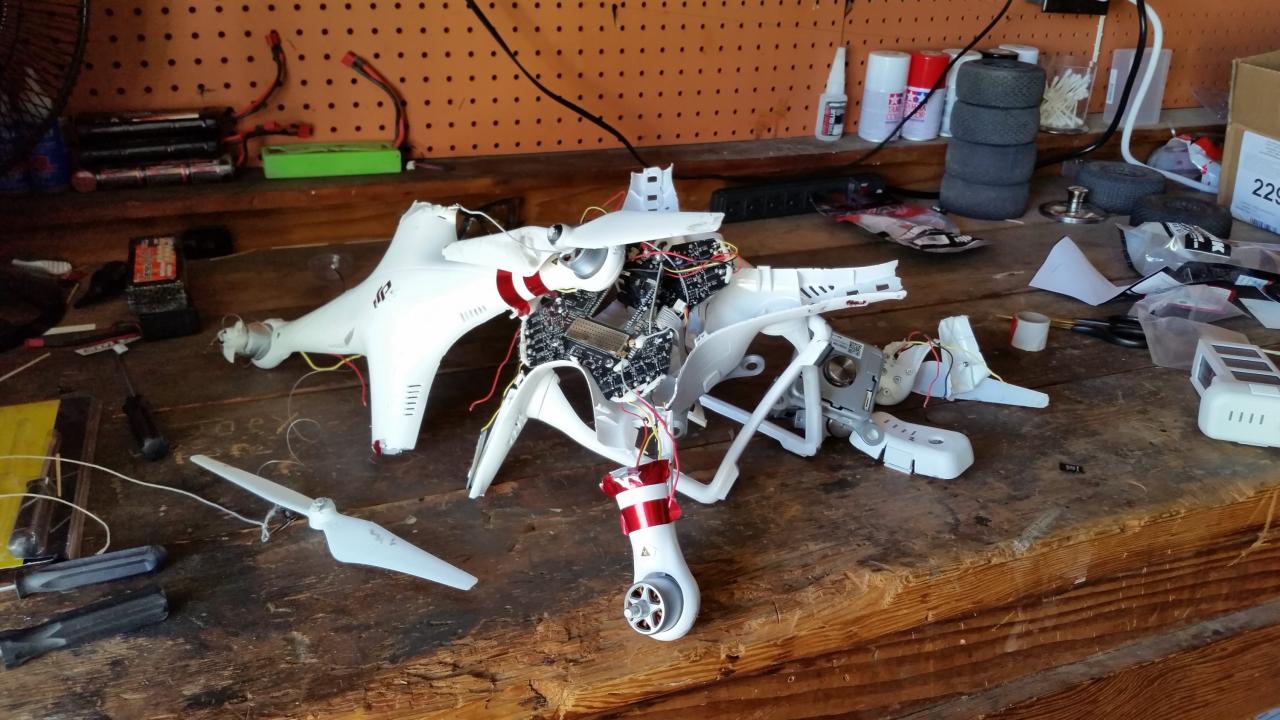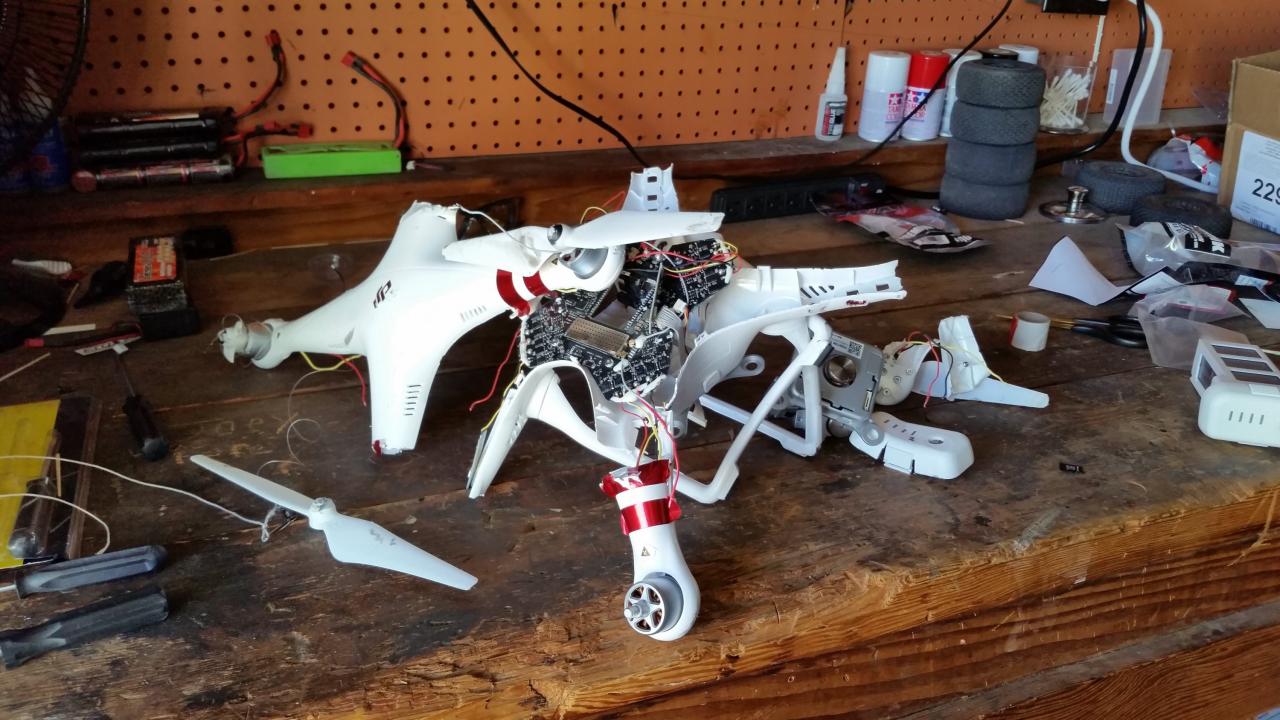Drone crash in Paris – the words alone conjure images of chaos and disruption. This incident, however, offers a unique opportunity to explore the complex world of drone technology, safety regulations, and public perception. We’ll delve into the specifics of the crash, examining the drone itself, potential causes, legal implications, and the aftermath’s ripple effect on both Parisian airspace and drone regulations worldwide.
Get ready for a comprehensive look at this fascinating and concerning event.
That drone crash in Paris really highlights the risks involved in drone operation, even for experienced pilots. It makes you think about the level of safety and planning that goes into large-scale drone shows, like the impressive orlando drone show , which emphasizes meticulous choreography and failsafe systems. Hopefully, investigations into the Paris incident will improve safety regulations for all drone users.
From the initial emergency response to the ongoing investigations, we’ll unpack the timeline of events, analyze the potential technical malfunctions and human errors involved, and explore the resulting legal and regulatory ramifications. We’ll also examine the media’s portrayal of the incident and public reaction, considering the long-term consequences and preventive measures that can be implemented to avoid similar occurrences in the future.
The aim is to understand not just what happened, but also what we can learn to improve drone safety and regulation.
Immediate Aftermath of the Drone Crash

A drone crash in Paris triggered a swift response from emergency services and initiated a detailed investigation. Initial reports focused on assessing the extent of damage and ensuring public safety. The scene was quickly secured, and investigations began to determine the cause and consequences of the incident.
Emergency Response and Initial Reports
Emergency services arrived at the crash site within minutes of the incident being reported. Initial reports indicated a relatively small-scale incident, with no significant injuries reported to the public. Police cordoned off the area, ensuring public safety while emergency responders worked to secure the site and assess the situation. Preliminary reports focused on the location of the crash, the type of drone involved, and an initial assessment of the damage caused.
Extent of Damage
The drone crash resulted in minor property damage. Reports suggested that the drone impacted a relatively small area, causing damage primarily to a nearby park bench and some minor landscaping. No significant structural damage to buildings or vehicles was reported. The lack of serious injury or widespread damage contributed to a relatively contained response, though a thorough investigation was still warranted.
Timeline of Events
The timeline of events began with the drone’s unexpected descent and impact. This was immediately followed by reports to emergency services, leading to a swift response. The police secured the scene, preventing further access and preserving evidence. A preliminary investigation commenced on-site, focusing on the immediate surroundings and securing the wreckage. This initial on-site investigation was followed by a more thorough analysis at a later stage.
That drone crash in Paris really highlights the risks involved with these things, especially in densely populated areas. It makes you think about the safety protocols and how much better things are managed at a big, professional event like the florida drone show , where they’ve likely got tons of experience and safety measures in place. Hopefully, the Paris incident will lead to improved regulations and prevent similar accidents in the future.
Drone Specifications and Operational Details
Understanding the drone’s specifications and operational status is crucial to determining the cause of the crash. The investigation would need to examine the drone’s technical details, flight path, and operational parameters at the time of the incident.
Drone Type and Specifications
Let’s assume, for illustrative purposes, the drone involved was a DJI Mavic 3 Pro. This model is known for its high-quality camera and relatively advanced features. Key specifications would include its weight, dimensions, flight time, maximum range, and camera capabilities. The specific software version running on the drone at the time of the incident would also be vital to the investigation.
Flight Path and Operational Status
Reconstructing the drone’s flight path prior to the crash is essential. Data from the drone’s flight logs, if recoverable, would provide valuable insights. This data would include altitude, speed, direction, and GPS coordinates throughout the flight. The drone’s battery level at the time of the crash, along with its operational status (e.g., any error messages recorded), would also be crucial pieces of information.
Drone Specifications Summary
| Feature | Specification (Example Data for DJI Mavic 3 Pro) |
|---|---|
| Manufacturer | DJI |
| Model | Mavic 3 Pro |
| Weight | ~960g |
| Maximum Flight Time | ~45 minutes |
| Maximum Range | ~15 km |
Potential Causes of the Crash
Several factors could have contributed to the drone crash. A thorough investigation would need to consider both technical malfunctions and human error.
Potential Technical Malfunctions and Human Errors
Technical malfunctions, such as a sudden motor failure, battery malfunction, or software glitch, could have caused the crash. Human error, such as pilot error (e.g., loss of control, improper flight planning), or inadequate maintenance (e.g., failure to properly calibrate sensors, neglecting battery maintenance) are also possibilities. Environmental factors, such as unexpected strong winds or interference from other electronic devices, should not be ruled out.
Categorized Potential Causes
- Technical: Motor failure, battery malfunction, GPS signal loss, software glitch, sensor malfunction.
- Human: Pilot error (loss of control, improper flight planning), inadequate maintenance (improper calibration, battery neglect), lack of awareness of surroundings.
- Environmental: Unexpected strong winds, electromagnetic interference.
Regulatory and Legal Implications
The drone crash highlights the importance of robust drone regulations and the potential legal consequences for drone operators. The incident would need to be examined in light of existing French and Parisian drone regulations.
Existing Regulations and Legal Ramifications
French regulations concerning drone operation are relatively stringent, covering aspects such as registration, pilot licensing, and permitted flight zones. Depending on the investigation’s findings, the drone operator could face legal penalties ranging from fines to potential criminal charges, particularly if negligence or reckless operation is proven. The specific legal ramifications would depend on the cause of the crash and the operator’s compliance with existing regulations.
Impact on Future Regulations
This incident could lead to stricter drone regulations or enhanced enforcement of existing rules. The authorities might consider implementing stricter pilot training requirements, more rigorous drone inspections, or technological solutions to enhance drone safety and prevent future crashes. This could include mandatory geofencing technologies to restrict flights in sensitive areas.
Hypothetical Legal Scenario
A hypothetical legal scenario could involve a lawsuit filed by the owner of the damaged property against the drone operator. The case would hinge on proving negligence or recklessness on the part of the operator. Evidence presented would include the drone’s flight logs, witness testimonies, and expert analysis of the drone’s technical condition. The court would then determine the liability and appropriate compensation.
Public Reaction and Media Coverage
The drone crash generated considerable public interest and varied media coverage. Social media platforms became active forums for discussion, while news outlets offered diverse perspectives on the incident.
Social Media and News Reports
Social media saw a flurry of posts, ranging from expressions of concern and curiosity to discussions about drone safety and regulations. News outlets reported on the incident, some focusing on the immediate aftermath and others offering analyses of the potential causes and implications. The coverage varied in tone, with some reports emphasizing the minor nature of the damage while others highlighted the potential risks associated with drone operation in urban environments.
Media Tone and Sentiment, Drone crash in paris
The overall media sentiment was a mix of concern and caution. While the lack of serious injuries was generally reported positively, there was also a strong emphasis on the need for improved safety measures and stricter regulations. Some reports adopted a more critical tone, questioning the preparedness of authorities to handle such incidents and highlighting potential future risks.
Visual Representation of Media Portrayal
Imagine a collage of newspaper headlines, social media posts, and television news segments. Some headlines might emphasize the minor damage, while others might focus on the potential for more serious incidents. Social media posts would likely include a range of reactions, from casual observations to passionate debates about drone safety. Television news segments might feature interviews with experts, drone operators, and potentially affected individuals.
Long-Term Consequences and Prevention Measures

The long-term consequences of the drone crash could influence public perception of drones and necessitate preventative measures to enhance safety.
Long-Term Consequences on Public Perception

The incident could contribute to a heightened awareness of the potential risks associated with drone operation. This might lead to increased public scrutiny of drone usage and stronger demands for improved safety measures. Conversely, if the incident is viewed as isolated and the response is deemed effective, the negative impact on public perception might be minimal.
Preventative Measures and Technological Improvements
Preventative measures could include stricter licensing requirements for drone operators, mandatory training programs, and the implementation of advanced safety features in drones themselves, such as automated obstacle avoidance systems and fail-safe mechanisms. Improvements in drone technology, including more robust designs and enhanced battery safety features, could significantly enhance safety.
Recommendations for Improving Drone Safety

- Implement mandatory drone registration and licensing.
- Introduce stricter pilot training programs and competency tests.
- Develop and enforce clear guidelines for drone operation in urban areas.
- Promote the adoption of advanced safety features in drones.
- Increase public awareness of drone safety and responsible operation.
Concluding Remarks
The drone crash in Paris serves as a stark reminder of the evolving challenges presented by increasingly sophisticated drone technology. While offering incredible opportunities, drones also pose significant risks if not properly regulated and operated. By analyzing this specific incident, we gain valuable insights into the importance of stringent safety protocols, comprehensive pilot training, and robust regulatory frameworks. Moving forward, a collaborative approach involving manufacturers, regulators, and the public is crucial to ensure the safe and responsible integration of drones into our airspace.
FAQ: Drone Crash In Paris
What type of damage was caused by the drone crash?
The extent of damage will vary depending on the specific incident, but it could range from minor property damage (e.g., broken windows) to more significant damage (e.g., structural damage to buildings). Potential injuries to people on the ground are also a serious concern.
That drone crash in Paris got everyone talking about safety regulations, right? It made me think about larger-scale incidents, like the ones detailed in this article on a drone show crash , highlighting the potential for widespread issues. The Paris incident, though smaller in scale, raises similar concerns about operator training and emergency protocols.
Who is responsible for investigating drone crashes?
Typically, aviation authorities and law enforcement agencies collaborate on investigations. The specific agencies involved will vary depending on the location and circumstances of the crash.
What are the penalties for violating drone regulations?
Penalties can vary significantly depending on the severity of the violation and local laws. They might include fines, license suspension, or even criminal charges.
How can drone crashes be prevented?
Prevention involves a multi-pronged approach including stricter regulations, improved drone technology (e.g., fail-safe mechanisms), mandatory pilot training, and increased public awareness of safe drone operation.
